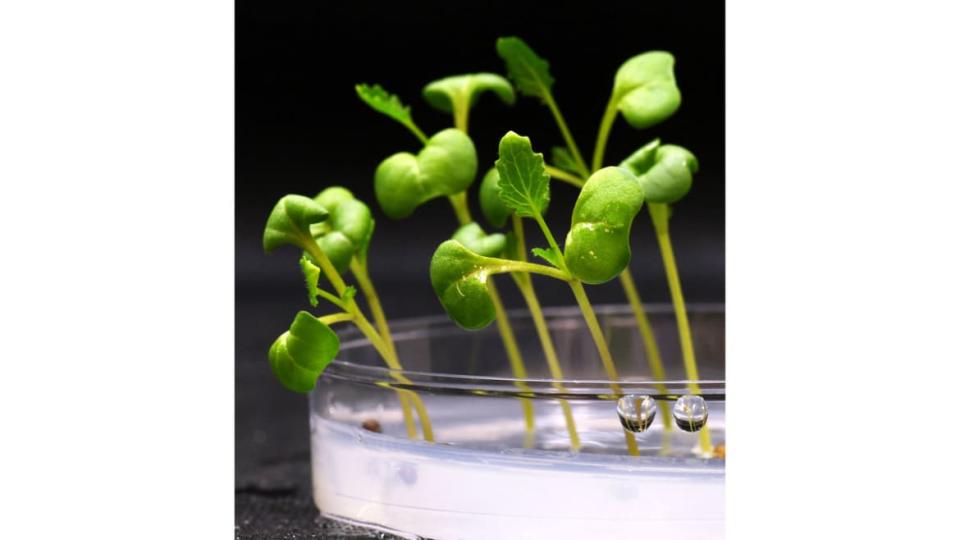These Plants Grew in the Dark Without Sunlight. Here's How.

Cast your mind back to your fifth grade biology class when you first learned about photosynthesis, the process where plants use energy from sunlight to convert carbon dioxide and water into glucose for food. Lose the sunlight, and the tomatoes you planted this spring aren’t likely going to last very long.
This can create a major challenge when it comes to addressing global food needs in increasingly cramped urban areas, where energy costs to grow indoor plants can run high. Sunlight is also a major hurdle for growing food at off-Earth locations like Mars and the moon. However, scientists have recently developed a process that could allow plants to grow without the need for sunlight at all, potentially upending the way we think about the future of farming.
In a paper published in the journal Nature Food on June 23, a team of researchers at University of California, Riverside and the University of Delaware have created an artificial method of photosynthesis that turns carbon dioxide, electricity, and water into acetate, an alternative chemical that plants can consume to grow instead of glucose. Using this method, the plants grew entirely in the dark and the study’s authors even found that the process was up to 18 times more efficient than the normal photosynthesis process for some plants.

“With our approach we sought to identify a new way of producing food that could break through the limits normally imposed by biological photosynthesis,” Robert Jinkerson, a UC Riverside assistant professor of chemical and environmental engineering and co-author of the paper, said in a press release.
The key to the process is a carbon dioxide electrolyzer, a device that uses electricity to convert carbon dioxide into acetate. Once the chemical is produced, it’s then diluted and added to glass vials where individual plants were growing hydroponically. In all, the process was used on nine plants including lettuce, rice, green pea, tomatoes, and jalapeño peppers. The team was also able to grow yeast, green algae, and mushroom-producing fungus with it.
The results were stunning. The plants were able to grow in the dark using the acetone-making electrolyzer. The algae grown using the method was roughly four times more energy efficient than the solar photosynthesis method.
Here’s the Best Way to Stop the Future Food Crisis Looming Over American Cities
The method doesn’t cut solar completely out of the equation. In fact, the electrolyzer utilizes solar panels in order to attain the electricity needed to produce the acetate. That said, it’s still an innovative method to grow plants without the need for direct sunlight. This could help provide a novel and more efficient solution to the growing challenges of global food insecurity, most of all enabling the viability of indoor farming facilities to keep people fed.
“Using artificial photosynthesis approaches to produce food could be a paradigm shift for how we feed people,” Jinkerson said. “By increasing the efficiency of food production, less land is needed, lessening the impact agriculture has on the environment. And for agriculture in non-traditional environments, like outer space, the increased energy efficiency could help feed more crew members with less inputs.”
Martha Orozco-Cárdenas, director of the UC Riverside Plant Transformation Research Center and co-author of the study, added, “Imagine someday giant vessels growing tomato plants in the dark and on Mars—how much easier would that be for future Martians?”
Got a tip? Send it to The Daily Beast here
Get the Daily Beast's biggest scoops and scandals delivered right to your inbox. Sign up now.
Stay informed and gain unlimited access to the Daily Beast's unmatched reporting. Subscribe now.

 Yahoo Movies
Yahoo Movies 